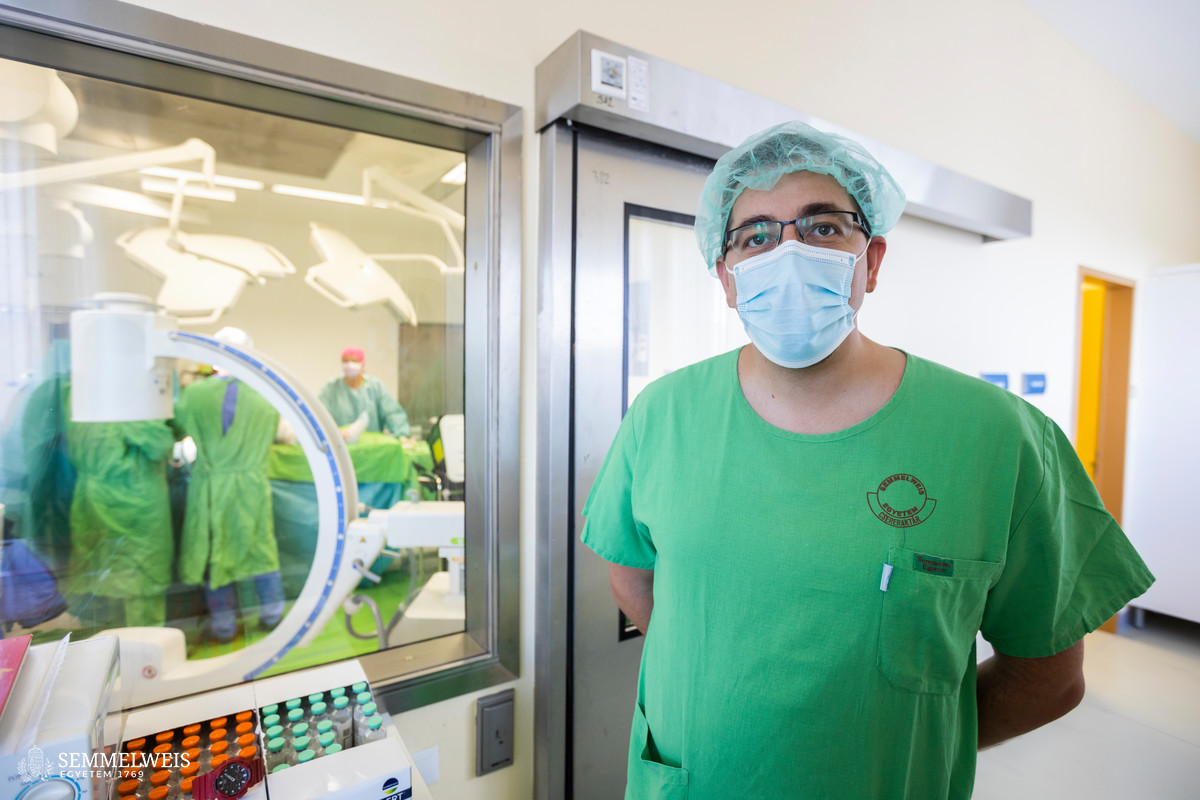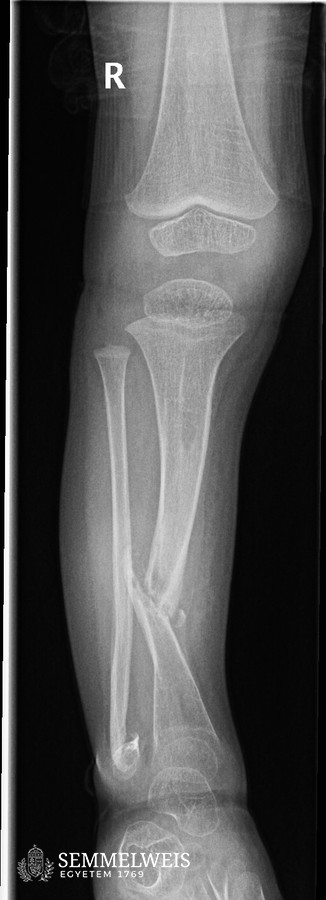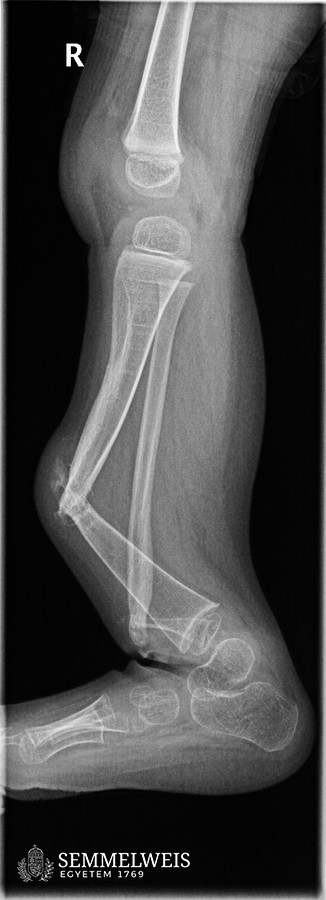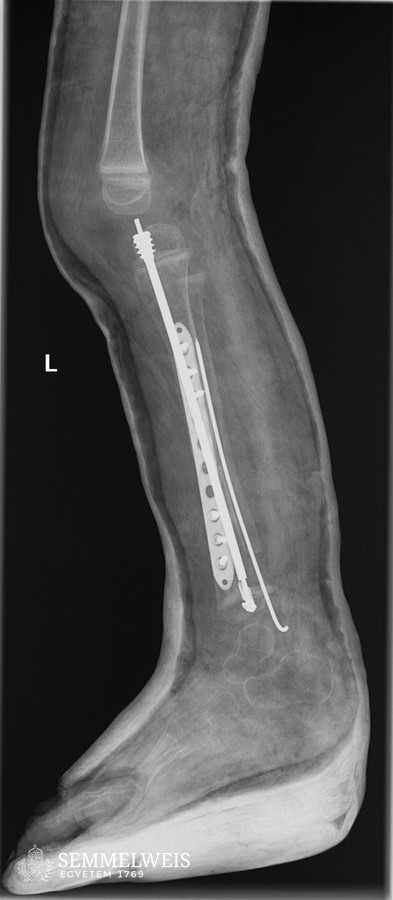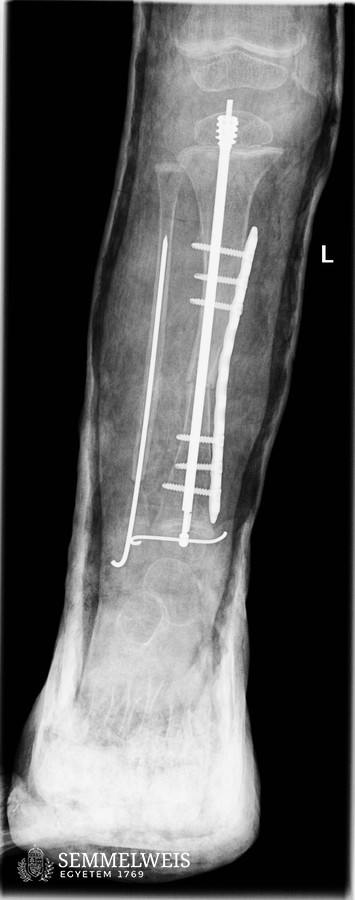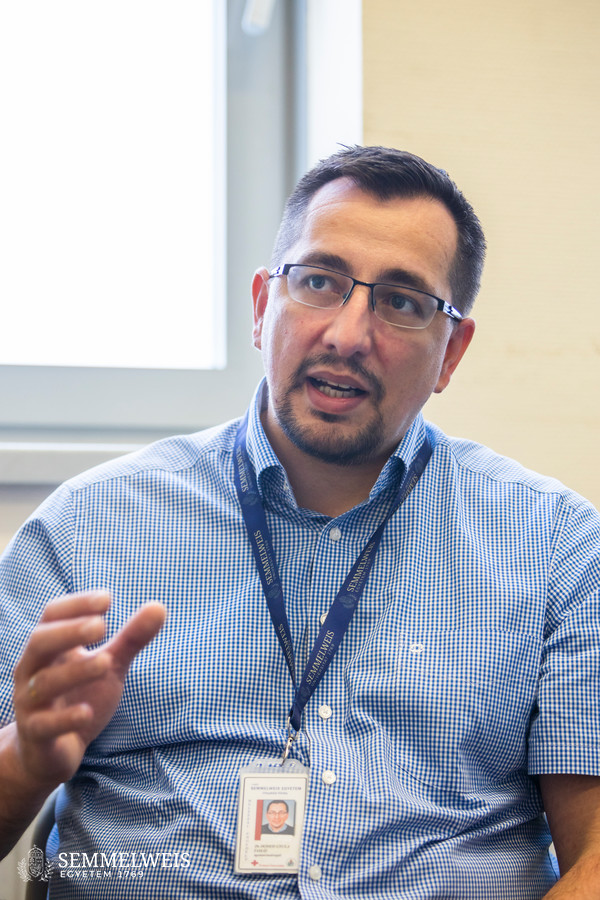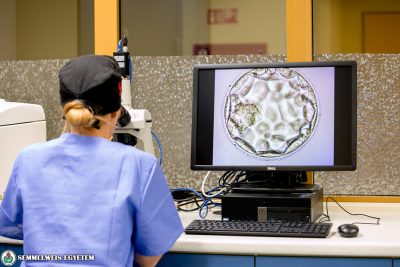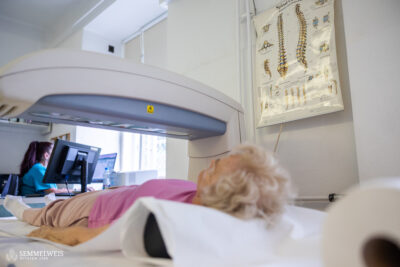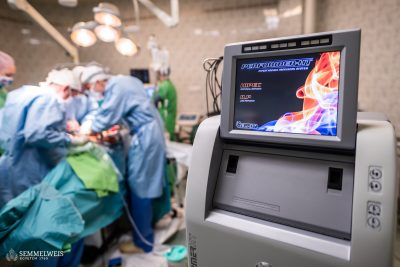In a rare developmental disorder, the periosteum covering the tibia produces so much bone-breaking material that the affected bone breaks spontaneously, leading to long-term limb shortening, difficulty in walking and often times, amputation of the limb. Congenital foot joint disease occurs in 2-3 newborns per year in Hungary, and until 10 years ago, it was treated with a different approach. It was considered a bone disease as opposed to the modern procedure, which is now primarily concerned with the treatment of periosteal disease.
„In the past, even if the sick bone part was removed, the operation led to a long-term cure in only half of the cases. In the other half of the patients, fractures developed again, and the process often led to amputation of the limb,” said Dr. Gyula Domos, a specialist in limb reconstruction at the Department of Orthopaedics. In search of more effective ways of treatment, he adopted a new technique developed by the Paley Institute in Florida founded by Dr. Dror Paley, an American surgeon, and at the European centre in Warsaw, also founded by Dr. Paley. „This procedure diverges from the previous therapy in its approach to the pathology,” explained the orthopaedic surgeon.
While we used to treat the issue as a bone disease, Dr. Dror Paley, an American orthopaedic surgeon has developed a complex surgical approach focusing on the periosteal lesion. To ensure success, this involves removing a much larger portion of the periosteum than the patient’s diseased bone underneath
– explained the orthopaedic surgery specialist.
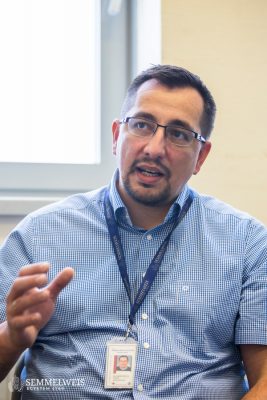 The size of the part to be removed is determined by a preoperative MR scan. The bone and periosteum are replaced from the bone and periosteum of the hip socket, and the operation is performed simultaneously in both areas, with two surgeons working on the hip and the leg,” explained Dr. Gyula Domos. The replacement and the bones of the leg are connected with multiple types of implants. One of these is such a telescopic intramedullary rod that is placed inside the bone and is able to stretch as the bone grows. Dr. Gyula Domos, who has mastered the therapy developed by Dr. Dror Paley in the United States, has been using the procedure at the Department of Orthopaedics since 2018. Unprecedented in the country so far, nine children have been treated with the new method, which increases the chances of recovery from 50 to over 90 percent, preserves the ability to walk and, as a result, eliminates the need for amputation.
The size of the part to be removed is determined by a preoperative MR scan. The bone and periosteum are replaced from the bone and periosteum of the hip socket, and the operation is performed simultaneously in both areas, with two surgeons working on the hip and the leg,” explained Dr. Gyula Domos. The replacement and the bones of the leg are connected with multiple types of implants. One of these is such a telescopic intramedullary rod that is placed inside the bone and is able to stretch as the bone grows. Dr. Gyula Domos, who has mastered the therapy developed by Dr. Dror Paley in the United States, has been using the procedure at the Department of Orthopaedics since 2018. Unprecedented in the country so far, nine children have been treated with the new method, which increases the chances of recovery from 50 to over 90 percent, preserves the ability to walk and, as a result, eliminates the need for amputation.
The therapy, which has shown breakthrough results in curing congenital shin joint diseases, is available to all at the Department of Orthopaedics, with two more procedures planned for this year. Funding for the implantation of the aforementioned intramedullary rod is provided by NEAK on individual request.
The availability of the procedure, which is the most complicated among pediatric orthopedic surgeries, was made even more complete by the visit of the European Paley Center’s lead based in Warsaw in early June, and the operation he performed at the Department of Orthopaedics. As the clinic’s orthopaedic surgeon put it, Dr. Tomasz Albrewczynski, who came to Budapest as a courtesy to perfect the method, showed some useful steps and gave some insightful advice that complemented the official description of the operation as well.
Although patients operated on using this technique since 2018 have also recovered, the methods demonstrated by Dr. Tomasz Albrewczynski further improve long-term outcomes, the specialist stressed, noting that no other surgery of such complexity has been performed in Hungary like the one carried out by his Polish colleague on an 11-year-old boy. Dr. Gyula Domos and the Hungarian team performed two more surgeries in June based on these professional experiences. The orthopaedic surgeon added that the 11, 7 and 3-year-old patients are doing well, but their full recovery will take at least six months.
Dr. Tomasz Albrewczynski’s work in Budapest is the beginning of a close professional cooperation between the clinic and the centre, which is considered a top institution in the field. Apart from being a highly important professional relationship, this is also a significant step towards becoming a specialised limb reconstruction surgery centre, since the procedure has so far only been available abroad and cannot be performed anywhere else in the country, added Dr. Gyula Domos.
Anita Szepesi
Translation: Viktória Kiss
Photo: Bálint Barta – Semmelweis University; Department of Orthopaedics
